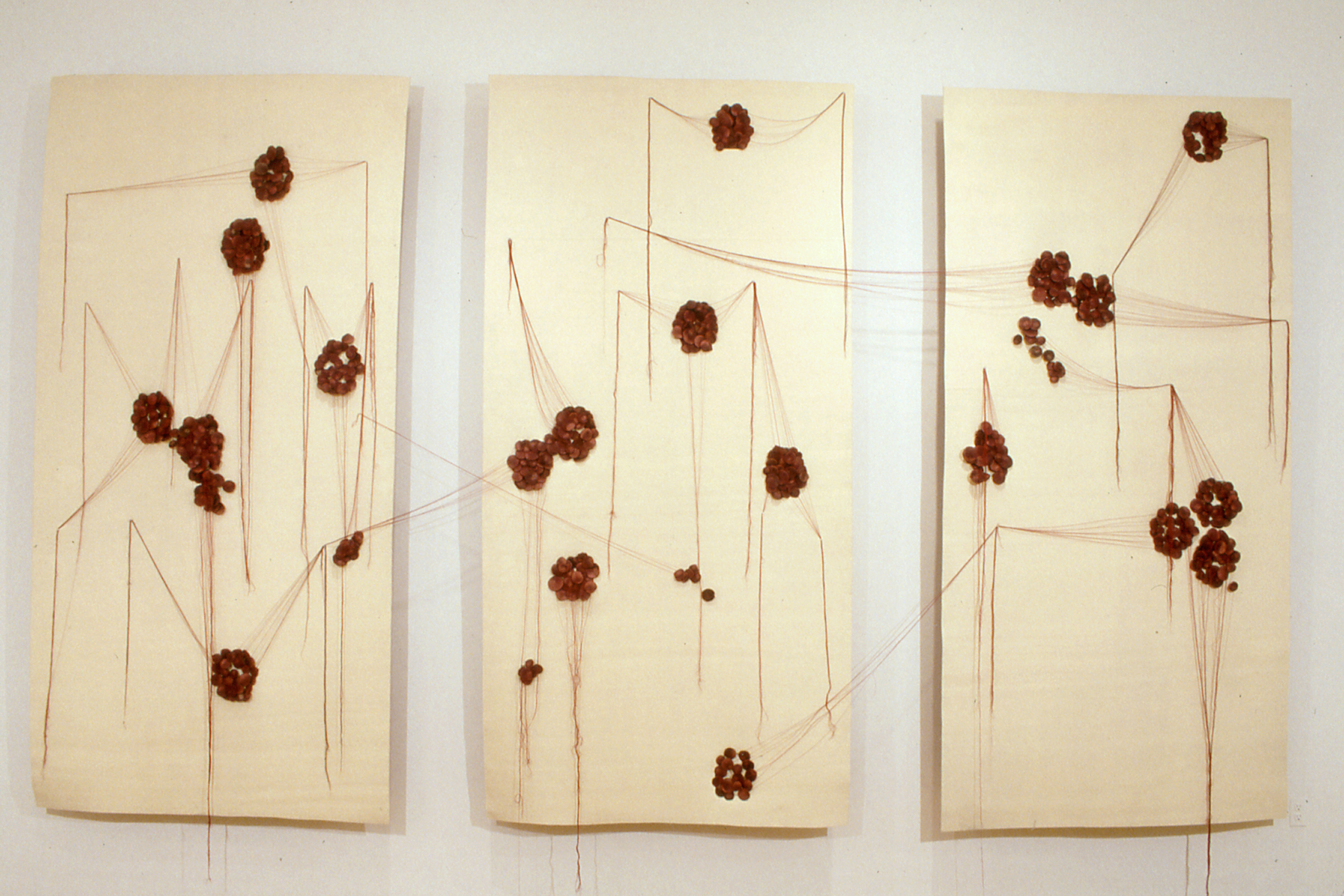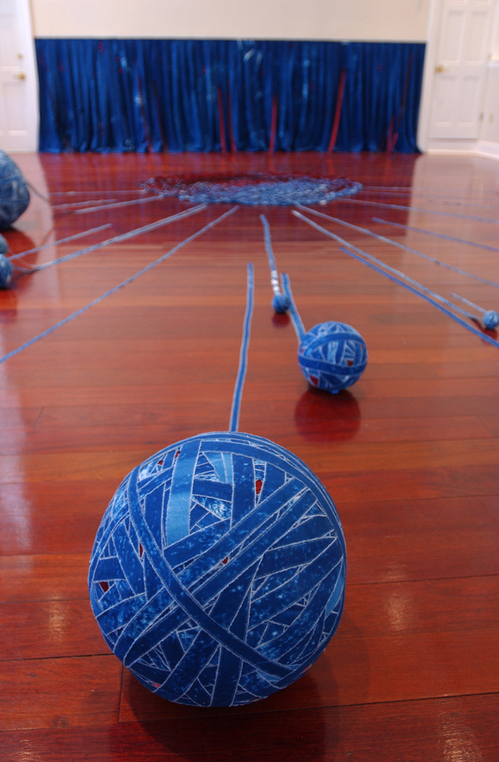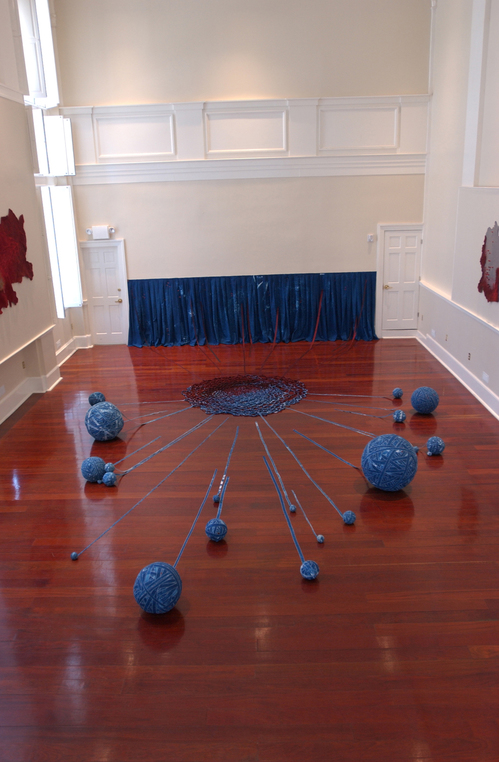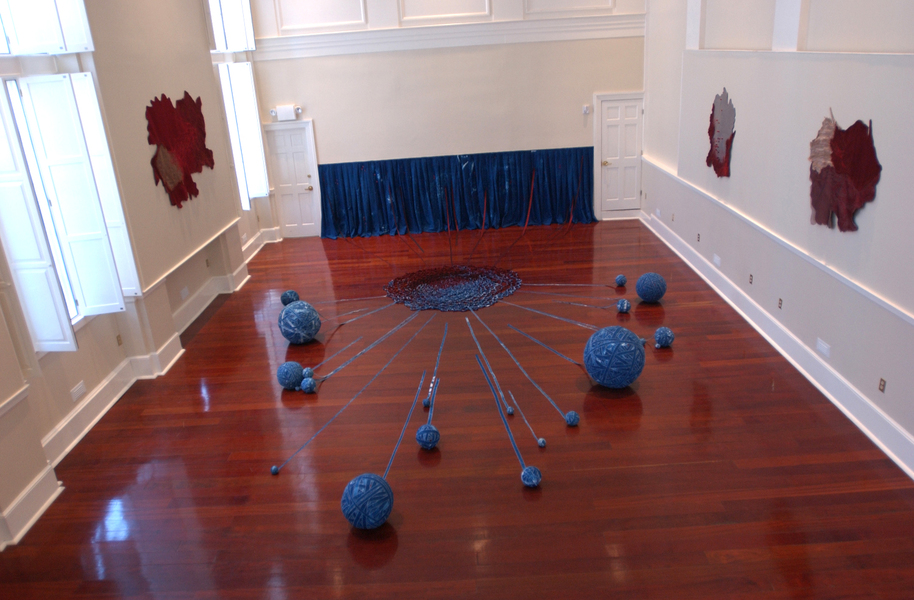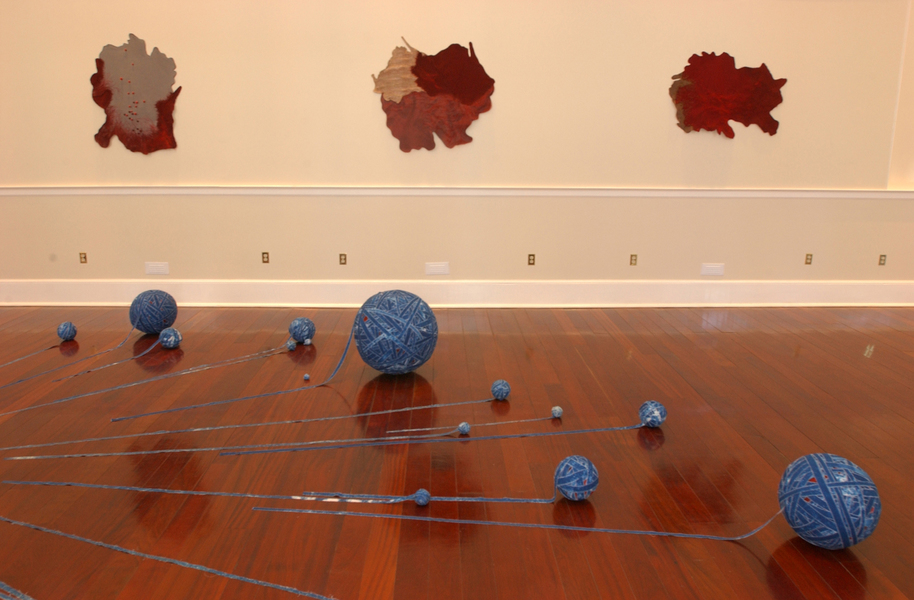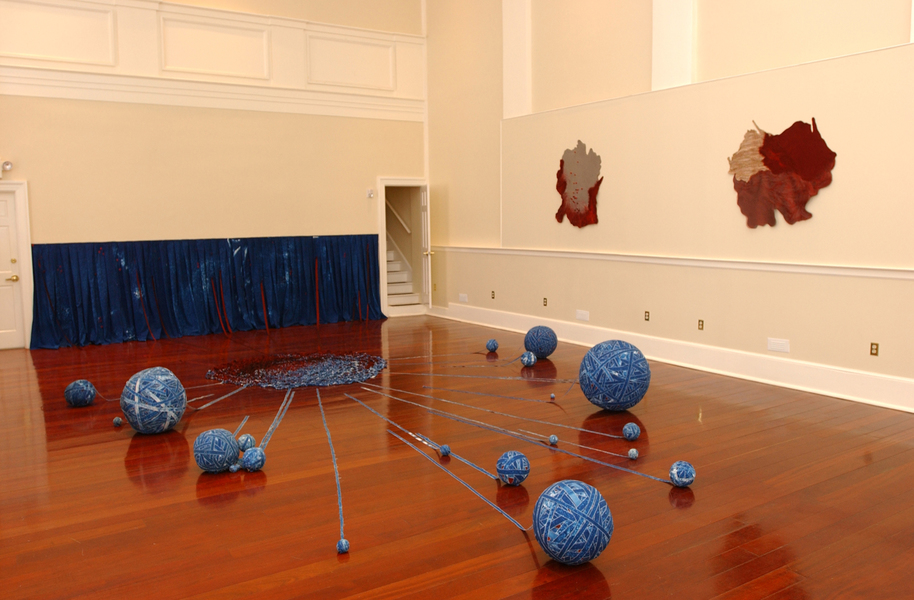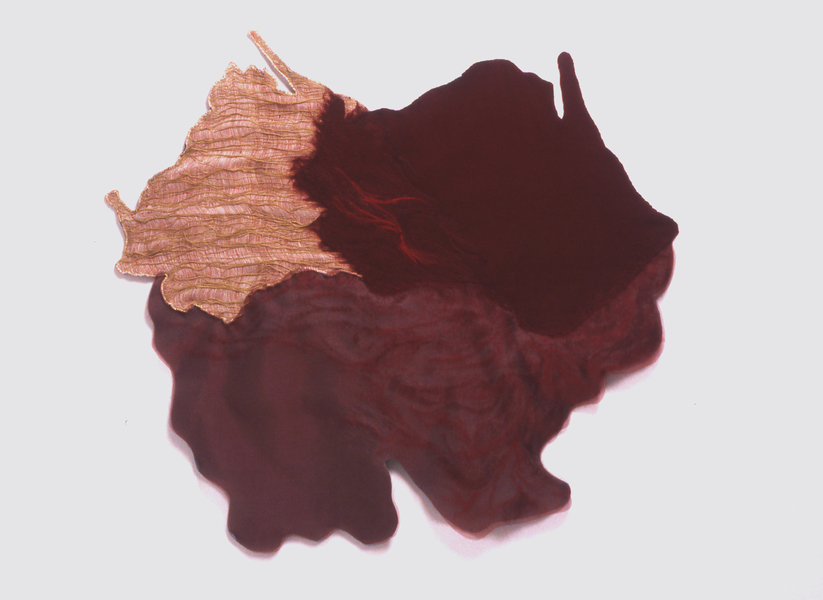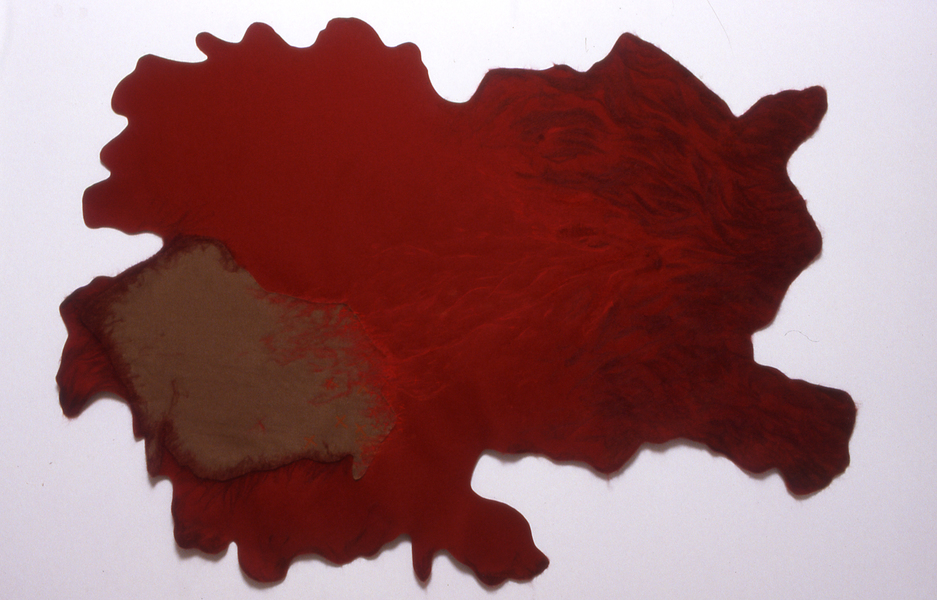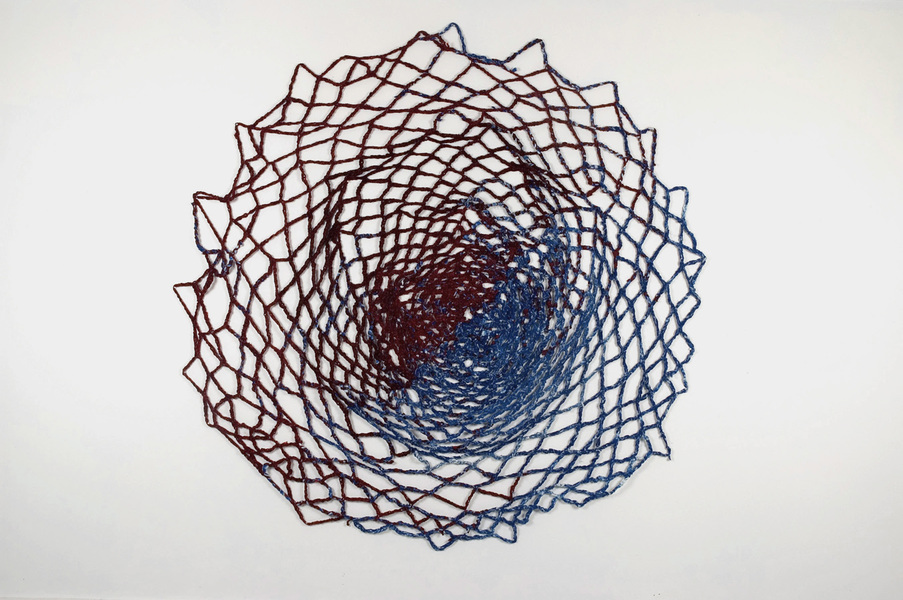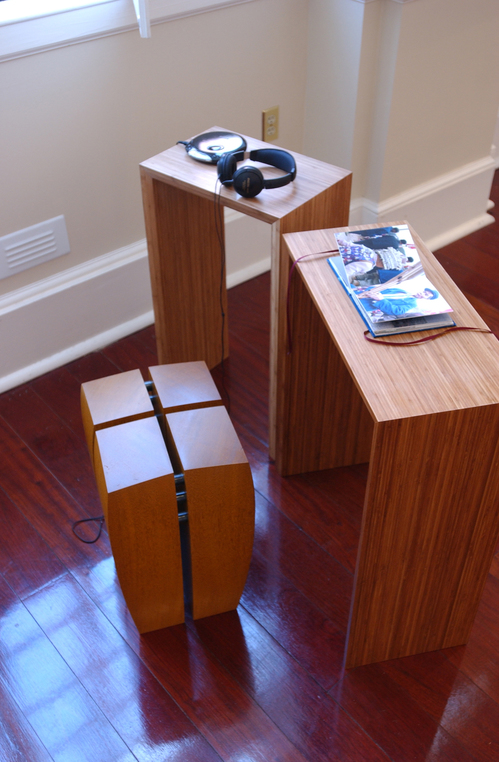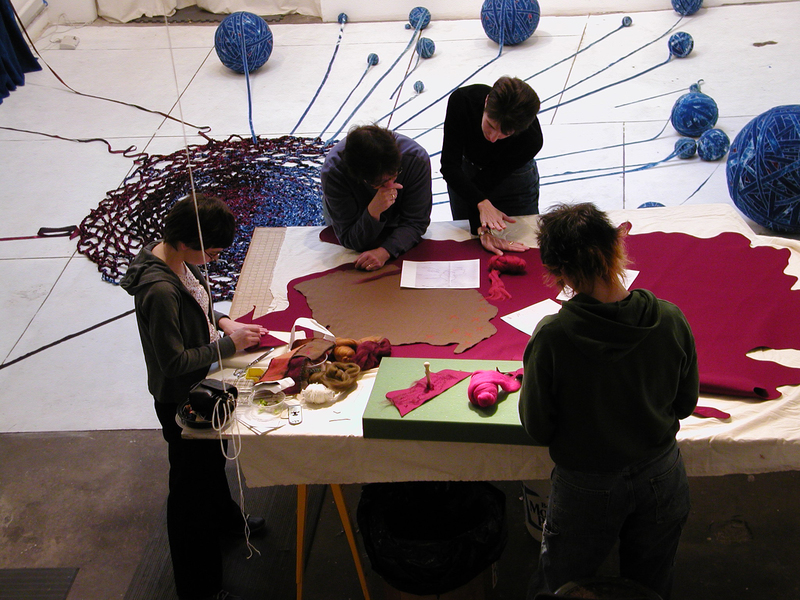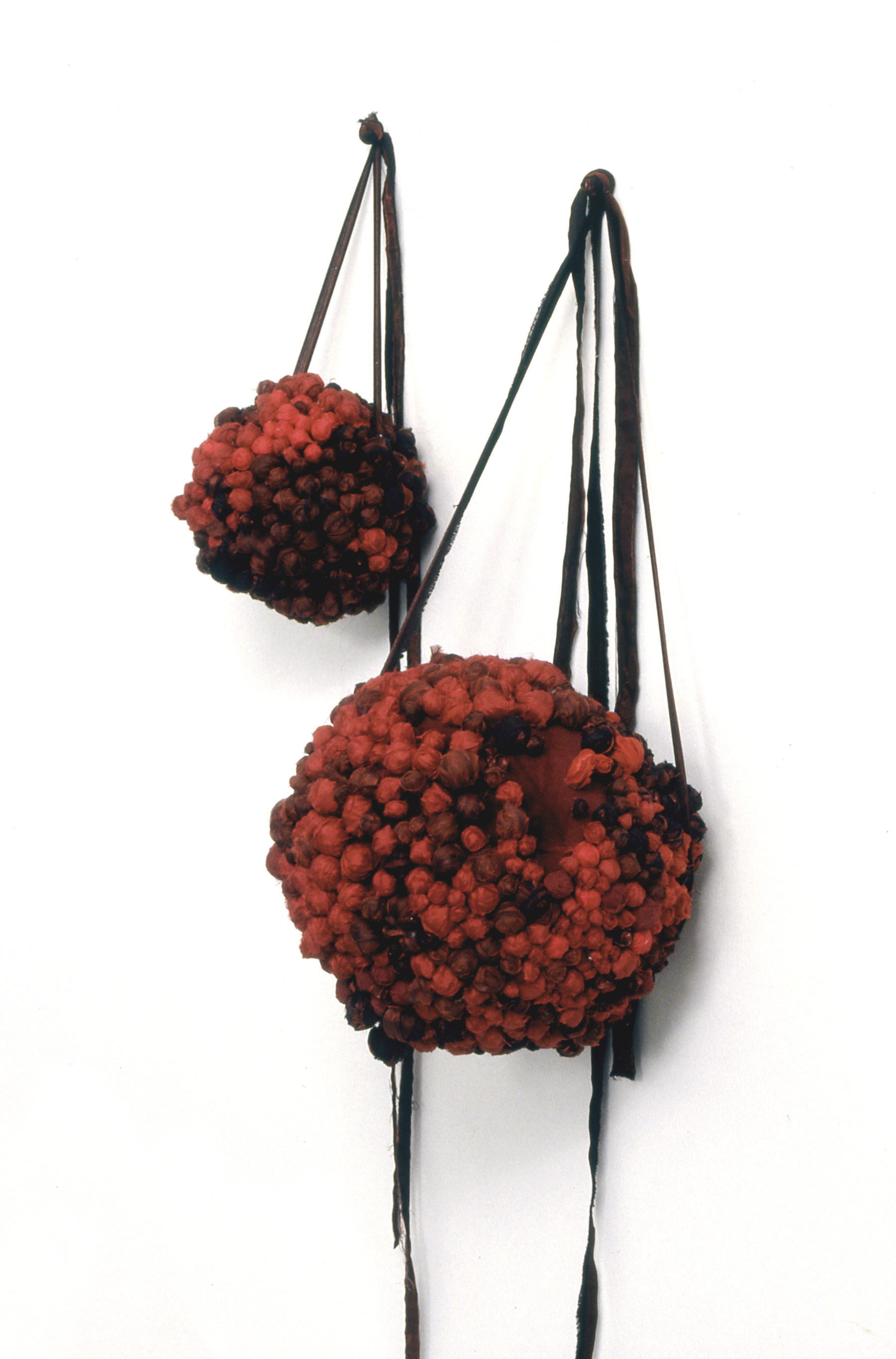Weaving Geographies (2004)
The Weaving Geographies project grew out of an endeavor I have been working on since 2002 in Guizhou province, southwestern China. Backpacking with a laptop and digital cameras to this geographically remote part of China, I investigated the art of the Miao people, a minority group in this region. A website hosted by the digital design department at Parsons School of Art and Design allowed me to create a daily visual/written diary as I traveled which one could access in real time. The Miao’s major art form is comprised of richly embroidered, woven and indigo dyed textiles. This clothing tells the story of the Miao migration, represents their creation myths, their heroes and echoes their animistic beliefs. Because the Miao have no written language these profoundly symbolic garments embody their entire culture with the women (who primarily wear the garments) acting as the literal carriers of that culture. In China I explored issues pertaining to the aesthetics and psychological meaning behind the making of these textiles, the similarities and differences between western and Miao concepts of art, individual creativity as well as the links between my own work and that of Miao women.
Weaving Geographies explores the idea of weaving two cultures together while each retains its distinct identity. I am interested in the concept that there can be both simultaneity and difference across cultures. The project draws on numerous sources such as: mapping as an identifier and conversely how a country’s boundaries are rendered porous by cultural, political and economic globalization; small world theory which proposes global interconnections between individuals and groups; and the use of Miao and American imagery, artistic practices and techniques.
The installation at Pei Chang Gallery included felted and woven wall pieces based on United States and Chinese ethnographic maps created in conjunction with the fibers department at SCAD as well as a sound installation created from my field recordings created in collaboration with the college’s sound department.
China project (2002 - 2003)
Introduction
As a woman artist incorporating fabric in my work, I am particularly interested in the major historical role that women throughout China have played in textile production, and related crafts. This was the primary focus throughout my travels as I researched ancient and contemporary silk & cotton production techniques, and related handcrafts done by ethnic minority women, such as the Miao, in southwestern China in March 2002.
A partner school in the U.S. created a web site titled "China Diary" allowing educational institutions involved in the project, such as the Kingswood-Oxford School in Hartford Ct., to travel with me in real time. As successful as this research trip was, travel, language and time constraints meant that some of my objectives went unfulfilled. For example,most minority households are engaged in farming during March, meaning I was not able to spend time speaking to individual women about their craft,nor learn from them as they embroidered, made silk felt or dyed with indigo.
The translator I originally made arrangements with was unable to accompany me once I arrived in China, and finding another guide who spoke minority languages as well as English and Han Chinese was difficult. The guide eventually hired already had other research commitments and was not always able to accompany me to many of the smaller villages. Landslides and bus breakdowns made travel difficult in some areas. However this venture did allow me to make important research contacts within China and laid the groundwork for a second trip planned for 2003 with deeper research into one minority group, the Miao, their art and textile traditions, and their links to American and European textile traditions.
The particular Miao groups I am interested in are located within a hundred mile radius of the town of Kaili. Landslides are less frequent in October and I will hire private cars where bus travel is unpredictable. Research contacts within China include Chinese folk art and craft specialist Mr. Yang Wenbin, a Miao researcher, curator of the Miao textile collection at the Costume Museum in Beijing and founder of an innovative indigo workshop in Kaili; Mr. Lao Ruijn,a Geijia folk and batik artist in Kaili; and Miao translator
Mr. Mao Lee.
My invitations from these people to return to China and continue my research are invaluable in that country and will greatly facilitate the goals of the project.The project is funded by the Asian Cultural Council and the Embroiderers Guild of America with in kind website production assistance from Parsons School of Art and Design's Digital Design Department.
———
Project Overview
I focused my research on the unique textile arts of the Miao minority and its subgroups (such as the Geijia, Flowery and Long Horned Miao) in the Kaili region of Guizhou province in southwest China. I conducted additional research in Gulong at a major lusheng
(a bamboo musical instrument) festival which brings together thousands of Miao from the surrounding countryside wearing their most prized clothing, and at the National Costume Museum of Beijing Institute of Clothing Technology in Beijing.
———
Project Description
The Miao's major art form is comprised of richly embroidered, batiked, woven and indigo dyed textiles. This clothing tells the story of the Miao migration, represents their creation myths, their heroes and echoes their animistic beliefs. Because the Miao have no written language these profoundly symbolic garments embody the entire culture with the women(who primarily wear the garments) acting as the literal carriers of that culture. The motifs are dominantly zoomorphic, anthropomorphic and phyllomorphic. One can only elucidate the true meaning of the motifs by speaking directly to the Miao in their own language. Mr. Mao Lee, himself a Miao, is the translator key to these discussions.
Using the town of Kaili as a base,I will travel to the more remote villages in the area,each know for a specific technique such as making silk felt,indigo batik or a particular embroidery stitch.With translator, Mr. Mao Lee, I will engage in in-depth discussions with women artists in each village,exploring issues pertaining to the aesthetics and psychological meaning behind the making of the textiles,as well as asking specific questions such as: what the power of women's textile work is to Miao culture, and why do we want to know about that power and what can we learn from it? In what ways are Miao women focusing on their own cultural identity rather than adapting to Chinese government entrepreneurial policies? Are young Miao girls interested in handing down this unique textile tradition to their children, and if so how is this being accomplished? What are the similarities and differences between western and Miao concepts of artist and art forms? Questions such as these frame my thinking about the Miao and the phenomenon of their cultural history being worn by women. They also create the frame or 'essential questions' for a collaborative dialogue to occur on the website. Mr. Lee will also arrange for women in each community to teach me specific embroidery and batik techniques. In the town of Kaili I will work with with Mr. Yang Wenbin,a Miao researcher,curator of the Miao textile collection at the Costume Museum in Beijing and founder of a small indigo dyeing workshop in Kaili.This workshop encourages young Miao to create small embroidered objects for the marketplace to supplement their meager farming income. By using indigenous but less labor intensive strategies the workshop's goal to to enable the Miao to have a better standard of living while holding on to their rich textile heritage.
The history of my own work as an artist includes an emphasis on family heritage and domestic handwork skills handed down to me by my grandmothers and mother. For many years sewing and handwork techniques especially those associated with traditional women's work have played a significant role in my personal artistic vocabulary. Witnessing similar handwork of women in a distant culture during my first China trip sent strands of thread, so to speak, back to its original source in my mothers handwork, her mother and so on. I found simultaneity and difference across cultures in the lives of these distinct groups of women. Identifying and articulating the links between the Miao's rich historical textile tradition,their storytelling and needlework and that of parallel American traditions from Native American Indian to the European is central to this project.
This project will provide educational institutions with a deeper understanding of both ancient and contemporary Miao culture as related to the major historical role women have played in creating a culturally based textile art form. It offers the capacity to be used in numerous, innovative ways to develop new curriculum, discussion and important cross cultural connections between the artistic/educational communities of the United States and China. I believe the uniqueness of this project's focus will generate a larger collaborative dialog fanning out from the web site thus expanding the conversation to include a extended audience in the art and education communities, and will serve as a creative resource linking the profound artistic heritage of the Miao with these communities in a global context.
Daily Diaries
My research and experiences with the Miao people: Download .pdf
My 2002 China trip diary: Download .pdf
My 2003 China trip diary: Download .pdf
Photo Credits:
Nene Humphrey
Lee Mao Qing
Joanna Michalowitcz
Contributors
The following people have posed questions regarding the Miao culture.
Replies to these questions can be found in diaries #6, 14, 19, 22, and 27.
Bill Buchen
Ellen Driscoll
Jane Farver
Heide Fasnacht
Jonathan Goodman
Lenore Malen
Tim Oakes
Nancy Princenthal
Marian Schoettle
Other contributors:
Madeleine Eayrs
Mr. Lee Mao Qing
Joanna Michalowicz
Acknowledgements 2002
I would like to thank the following people and institutions for their support in making the China Project a reality:
Peter Alswife
AsianArts Foundation
Brendon Chous
Margaret Coggswell: Asia Cultural Council
Don J. Cohen
Danwen
Jane Farver
Kingswood Oxford School: Laura Hansen, Dr. Kathleen Gorski, Patricia Rosoff
Professor Vito Giacolone
Jonathan Goodman
Neville Agnew, Getty Foundation
Lorenz Helbling
Fritz Hoffman
Sarah Jessup
Judy King
C.S. Kiang
Bing Lee
Lee Mao Qing
Anna Mellargard, T'Cafe
Andrea Miller-Keller
Professor Tim Oakes, Univ.of Colorado
Liao Rujen
Ulf Skogsberah
Professor Louisa Schein, Rutgers Univ.
Berkshire Tacaonic Foundation
Lily Wei
China Academy of Art, Hangzhou: Professor Jiao Xiaojian
Chaos Chen Yang
Wenbin Yang
Special Thanks to Ms. Joanna Michalowicz
Acknowledgements 2003
I would like to thank the many artists, scholars, curators and writers who so generously contributed their time, energy and expertise to this project:
Frederike Taylor
C.S. & Marilyn Kiang
Sean O'neil
Ellen Driscoll
Jane Farver
Heide Fasnacht
Jonathan Goodman
Lenore Malen
Nancy Princenthal
Marian Schoettle
Mr Lee Mao Qing
Tim Oakes
Bill Buchen
Lily Wei
Thanks
To the Parsons School of Design Digital Design Department, especially Colleen Macklin, chairman, who helped make the China Diary web site a reality, and to Madeline Eayers who designed, coordinated and maintained the site.
To Margaret Coggswell from the Asian Cultural Council for her thoughtful and active interest in this project from its inception.
To Joanna Michalowictz for her artistic and cultural insights, broad textile knowledge, and unflagging energy and sense of humor throughout our backpacking travel in China.
To the Savannah College of Art & Design for sound recording equipment and exhibition support for Weaving Geographies, an installation which will draw upon the China Diary as a primary resource.
Finally the China Diary project would not have been possible without the substantial support of the Asian Cultural Council as well as a research fellowship from The Embroiderers Guild of America Inc.

